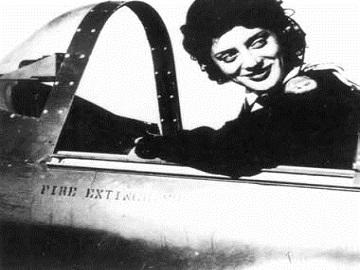
Section Branding
Header Content
Forgotten Women Part 9: Helen Wyatt Snapp
Primary Content

The Pentagon announced in December it would open combat positions to women. It marked a major moment in the history of women in the US military - a history that goes back further than many realize. As we look at Forgotten Women in Savannah history, meet Helen Wyatt Snapp: a pilot at Fort Stewart during World War II.
When soldiers first move to Fort Stewart, they get introduced to their new home by learning about the post’s services at a newcomer orientation. And the soldiers pay a visit to the Third Infantry Division’s museum.
Museum director Walter “Buck” Meeks says the museum is key to creating a sense of community for soldiers coming from all sorts of backgrounds and regions. "We take this vastly disparate group of people who have nothing in common and we give them something in common," Meeks says. "You’re all part of the third division. You’re all part of the Fort Stewart/Hunter Field military community. And these - when we come in here in the Rogues’ Gallery" - what Meeks calls a room of portraits highlighting key figures in the history of Fort Stewart, Hunter Army Airfield, and the Third Infantry Division - "and when you come in the Rogues Gallery and see the portraits, these are the people that shaped our culture."
The group includes the men that Stewart and Hunter were named for, decorated veterans of the posts, and just one woman: Helen Wyatt Snapp. Snapp was a Women Airforce Service Pilot - or WASP - during World War II. They were a group of more than a thousand women who flew planes for the military on the homefront, freeing up men to serve overseas.
"The WASP program put their people through exactly the same cadet training that the Air Corps did," Meeks says, "exactly the same instructors, exactly the same aircraft, and the washout rate - the failure rate - was about the same for male and for female recruits."
Beyond being held to the same standards, the women often felt they had more to prove. In an interview archived in the Veterans History Project at the Library Congress, Snapp says she and the other pilots faced a lot of prejudice when the program began. "There was so much controversy about women flying, wasting money teaching women to fly. What good would that do?" she says. "Even with that, the menopause, time of month, women couldn't fly at that time. We proved them wrong. No matter what happened, we proved them wrong."
And the women of WASP sometimes had fun pushing boundaries and pushing back against the stereotypes.
"We would dive bomb them and we were told we didn't have to go below 500 feet if we didn't want to. But we pushed the envelope every time. We went as low as we could. That was fun," Snapp says. "Then we would take off our helmet. We managed to get helmets at that time. And the helmets let our hair fly out and we let them know it was a woman doing that. If we dare fly back over, then they would moon us."
Mostly, the women at Fort Stewart - then known as Camp Stewart - towed targets for soldiers in training to practice shooting. But Meeks says Snapp was part of a group that took on a new project as well: drones.
"There was no such thing before. Especially drones with a military purpose," Meeks says.
Snapp and her fellow WASPs figured out how to fly those early drones - a tough task, since at the time pilots had to be in sight of the remote-controlled planes to fly them.
"And it was something that they just handled as a matter of course. It was something that they were just delighted to take on the challenge," he says.
Meeks hopes to inspire current soldiers and aviators with stories like that one about Helen Snapp and the other WASPs. It’s why he hung Snapp’s portrait in the museum, and why he invited her to speak at Fort Stewart in 2001. Meeks says that after that talk, the soldiers lined up en masse to get autographs from the aviation pioneer.
In her archive interview, Snapp says she loved speaking to groups like that - but she’d rather see words like “hero” reserved for soldiers who fought in the war. For Snapp, her service was mostly about the chance to fly.
"I had never been away from home before like that. It was quite an experience just to take that step," she says. "But I was just thrilled to pieces, because I just loved to fly. And here I was going to be able to fly all these wonderful military airplanes."
Before her death in 2013, Helen Wyatt Snapp donated her old WASP uniform to the Fort Stewart museum.
Tags: forgotten women, Savannah, Fort Stewart, helen wyatt snapp, Library of Congress, veterans history project, Army, wasp, World War II
Bottom Content
